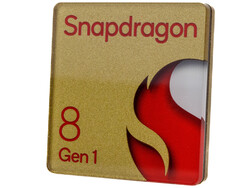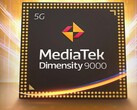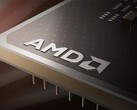Erste Benchmarks: So schnell ist der neue Snapdragon 8 Gen 1
Im Rahmen seines Snapdragon Tech-Summits hat Qualcomm unter anderem sein neues Spitzen-SoC für Android-basierte Smartphones und Tablets vorgestellt (wir berichten). Das SoC (System-on-a-Chip) wird erstmals in einer 4-nm-Fertigungstechnik produziert und basiert auf ARMs v9-Architektur. Dies verspricht vor allem eine höhere Effizienz, da sich an den Taktraten des Prozessors jedoch kaum etwas geändert hat, sind eher geringe Geschwindigkeitsvorteile in diesem Bereich zu erwarten. Anders sieht es bei der GPU (Graphics Processing Unit) aus, deren Architektur grundlegend überarbeitet wurde und die erste Adreno der neuen 700-Serie ist.
Ebenso hat Qualcomm umfangreiche Verbesserungen bei den Bildprozessoren für die Kamera(s) vorgenommen, welche nun mit 18 Bit arbeiten. Außerdem wurde ein zusätzlicher energiesparender ISP (Image Signal Processor) in den Sensing-Hub integriert, welcher dauerhaft aktiv ist und so völlig neue Möglichkeiten eröffnet. Der Hexagon-Chipsatz hat eine doppelt so große Tensor-Einheit spendiert bekommen, welche eine viermal so hohe Leistung für Machine-Learning- sowie KI-Algorithmen offeriert.
Uns war es im Rahmen des Summits vor Ort bereits möglich, erste Benchmarks mit einem Referenz-Design durchzuführen. Dieses besitzt ein mit 144 Hz arbeitendes Full-HD-Plus-Display (AMOLED) und kann auf 8 GB LPDDR5-Arbeitsspeicher zurückgreifen. Als interner Speicher kommen 512 GB UFS 3.1 zum Einsatz.
Spezifikationen
| Snapdragon 8 Gen 1 | Snapdragon 888+ | Snapdragon 888 | |
|---|---|---|---|
| Architektur | 4 nm (Samsung EUV), ARMv9-basiert | 5 nm (Samsung EUV), ARMv8.4A-basiert | 5 nm (Samsung EUV), ARMv8.4A-basiert |
| CPU | 1x Cortex X2 (bis zu 3,0 GHz)3x Cortex A710 (bis zu 2,5 GHz)4x Cortex A510 (bis zu 1,8 GHz) | 1x Cortex X1 (bis zu 3,0 GHz)3x Cortex A78 (bis zu 2,42 GHz)4x Cortex A55 (bis zu 1,8 GHz) | 1x Cortex X1 (bis zu 2,84 GHz)3x Cortex A78 (bis zu 2,42 GHz)4x Cortex A55 (bis zu 1,8 GHz) |
| GPU | Adreno 730 | Adreno 660 | Adreno 660 |
| 5G-Modem | Snapdragon X65Download: bis zu 10,0 GBit/sUpload: bis zu 3 GBit/s | Snapdragon X60Download: bis zu 7,5 GBit/sUpload: bis zu 3 GBit/s | Snapdragon X60Download: bis zu 7,5 GBit/sUpload: bis zu 3 GBit/s |
| ISP | Triple 18 BitAlways-On-ISP im Sensor-Hub | Triple 14 Bit | Triple 14 Bit |
Benchmarks - Snapdragon 8 Gen 1 mit starkem Plus für GPU und AI
Die zentrale Prozessoreinheit des Qualcomm Snapdragon 8 Gen 1 wird zwar in einem moderneren Fertigungsverfahren hergestellt und basiert auf den aktuellen Cortex-Designs von ARM, welche auf drei Cluster aufgeteilt sind, bietet jedoch kaum höhere Taktraten.
Während der Prime-Core gegenüber dem Vorgänger Snapdragon 888+ unverändert mit 3,0 GHz arbeitet, wurde die Frequenz der drei Leistungskerne (Cortex A710) leicht auf 2,5 GHz (SD888/888+: 2,42 GHz) erhöht. Die vier Energiesparkerne (Cortex A510) werkeln wieder mit jeweils bis zu 1,8 GHz.
Entsprechend gering fällt das Leistungsplus im Geekbench aus. Die Single-Core-Performance steigt zwar um rund 10 Prozent an, reicht aber nicht annährend an die des iPhones mit Apples A15-SoC heran. Im Multi-Core-Test fällt der Zuwachs sogar noch etwas geringer aus.
Anders stellt es sich im AnTuTu 9 dar, welcher im CPU-Bereich zwar ebenfalls nur ein Plus von 10 Prozent bescheinigt, jedoch ist der Snapdragon 8 Gen 1 in diesem Benchmark sogar 7 Prozent schneller als das iPhone.
| Geekbench 5.5 | |
| Single-Core | |
| Apple iPhone 13 Pro | |
| Qualcomm Snapdragon 8 Gen 1 Reference | |
| Nubia RedMagic 6S Pro | |
| Asus ROG Phone 5s | |
| Xiaomi Mix 4 | |
| Samsung Galaxy S21 Ultra | |
| Google Pixel 6 | |
| Multi-Core | |
| Apple iPhone 13 Pro | |
| Qualcomm Snapdragon 8 Gen 1 Reference | |
| Asus ROG Phone 5s | |
| Nubia RedMagic 6S Pro | |
| Xiaomi Mix 4 | |
| Samsung Galaxy S21 Ultra | |
| Google Pixel 6 | |
| Antutu v9 - CPU | |
| Qualcomm Snapdragon 8 Gen 1 Reference | |
| Apple iPhone 13 Pro | |
| Xiaomi Mix 4 | |
| Samsung Galaxy S21 Ultra | |
| Google Pixel 6 | |
Bärenstark zeigt sich die neue Adreno-730-GPU, welche insbesondere enorme Verbesserungen im Zusammenspiel mit der Vulkan-API demonstriert. Im aktuellen 3DMark Wild Life (Extreme) wird eine um 77 beziehungsweise 68 Prozent erhöhte Performance erzielt. Lediglich das iPhone ist in diesem Benchmark schneller, nutzt jedoch auch die hauseigene Metal-Schnittstelle. Kommt das ältere OpenGL ES zum Einsatz, kann auch Apples-Chipsatz nicht mehr mithalten und der Snapdragon 8 setzt sich klar an die Spitze, demonstriert bei dieser API jedoch eher geringe Zuwächse im Gesamtscore. Anders sieht das bei der Beurteilung der reinen Grafikberechnung aus, hier ist mindestens ein Plus von 50 Prozent möglich.
Dominat tritt die Adreno 730 des Snapdragon 8 Gen 1 im GFXBench auf, bei welchem sie sogar Apples A15 Bionic in jedem Test hinter sich lassen kann. Gegenüber dem eigenen Vorgänger-SoC ist bei älteren Schnittstellen sogar nahezu eine Leistungsverdopplung drin. Kann die Vulkan-API genutzt werden, erreicht das Snapdragon-SoC immer noch ein paar Frames mehr. An sich eine tolle Sache, jedoch werden nach Angaben von Qualcomm immer noch 95 Prozent aller Spiele mit OpenGL ES betrieben.
| GFXBench (DX / GLBenchmark) 2.7 - 1920x1080 T-Rex Offscreen | |
| Qualcomm Snapdragon 8 Gen 1 Reference | |
| Apple iPhone 13 Pro | |
| Xiaomi Mix 4 | |
| Nubia RedMagic 6S Pro | |
| Samsung Galaxy S21 Ultra | |
| Google Pixel 6 | |
| GFXBench 3.0 - 1920x1080 1080p Manhattan Offscreen | |
| Qualcomm Snapdragon 8 Gen 1 Reference | |
| Apple iPhone 13 Pro | |
| Xiaomi Mix 4 | |
| Nubia RedMagic 6S Pro | |
| Samsung Galaxy S21 Ultra | |
| Google Pixel 6 | |
| GFXBench 3.1 - 1920x1080 Manhattan ES 3.1 Offscreen | |
| Qualcomm Snapdragon 8 Gen 1 Reference | |
| Apple iPhone 13 Pro | |
| Nubia RedMagic 6S Pro | |
| Xiaomi Mix 4 | |
| Samsung Galaxy S21 Ultra | |
| Google Pixel 6 | |
| GFXBench | |
| 1920x1080 Car Chase Offscreen | |
| Qualcomm Snapdragon 8 Gen 1 Reference | |
| Apple iPhone 13 Pro | |
| Samsung Galaxy S21 Ultra | |
| Xiaomi Mix 4 | |
| Nubia RedMagic 6S Pro | |
| Google Pixel 6 | |
| 1920x1080 Aztec Ruins Normal Tier Offscreen | |
| Qualcomm Snapdragon 8 Gen 1 Reference | |
| Qualcomm Snapdragon 8 Gen 1 Reference | |
| Apple iPhone 13 Pro | |
| Asus ROG Phone 5s | |
| Samsung Galaxy S21 Ultra | |
| Xiaomi Mix 4 | |
| Nubia RedMagic 6S Pro | |
| Google Pixel 6 | |
| 2560x1440 Aztec Ruins High Tier Offscreen | |
| Qualcomm Snapdragon 8 Gen 1 Reference | |
| Qualcomm Snapdragon 8 Gen 1 Reference | |
| Apple iPhone 13 Pro | |
| Asus ROG Phone 5s | |
| Samsung Galaxy S21 Ultra | |
| Xiaomi Mix 4 | |
| Google Pixel 6 | |
| Nubia RedMagic 6S Pro | |
Da die Systemgeschwindigkeit nicht nur vom SoC abhängig ist, lassen die Werte im PCMark sicherlich noch eine Menge Raum, sind aber bereits unter dem installierten Android 12 recht hoch. Erwähnenswert ist zudem sicherlich, dass der AnTuTu-Score erstmals siebenstellig ausfällt.
Der AIMark deckt nur einen gewissen Teil der Performance für maschinelles Lernen und KI-Algorithmen ab und bleibt auch hinter den Werten des Vorgängers zurück, muss sich knapp von Apple geschlagen geben und auch deutlich hinter Samsungs Exynos einreihen.
Dieser frühe Wert sollte jedoch noch nicht überbewertet werden, da die Optimierungen sicherlich noch nicht optimal sind. Bei ersten finalen Geräten erwarten wir deutlich höhere Werte.
| AImark - Score v2.x | |
| Xiaomi Mi 11i | |
| Samsung Galaxy S21 Ultra | |
| Apple iPhone 13 Pro | |
| Qualcomm Snapdragon 8 Gen 1 Reference | |
| Xiaomi Mix 4 | |
| Nubia RedMagic 6S Pro | |
| Google Pixel 6 | |
| Antutu v9 | |
| Total Score | |
| Qualcomm Snapdragon 8 Gen 1 Reference | |
| Xiaomi Mix 4 | |
| Apple iPhone 13 Pro | |
| Xiaomi Mi 11i | |
| Samsung Galaxy S21 Ultra | |
| Google Pixel 6 | |
| CPU | |
| Qualcomm Snapdragon 8 Gen 1 Reference | |
| Apple iPhone 13 Pro | |
| Xiaomi Mix 4 | |
| Xiaomi Mi 11i | |
| Samsung Galaxy S21 Ultra | |
| Google Pixel 6 | |
| GPU | |
| Qualcomm Snapdragon 8 Gen 1 Reference | |
| Xiaomi Mix 4 | |
| Xiaomi Mi 11i | |
| Apple iPhone 13 Pro | |
| Samsung Galaxy S21 Ultra | |
| Google Pixel 6 | |
| MEM | |
| Qualcomm Snapdragon 8 Gen 1 Reference | |
| Apple iPhone 13 Pro | |
| Xiaomi Mix 4 | |
| Samsung Galaxy S21 Ultra | |
| Xiaomi Mi 11i | |
| Google Pixel 6 | |
| UX | |
| Qualcomm Snapdragon 8 Gen 1 Reference | |
| Xiaomi Mix 4 | |
| Xiaomi Mi 11i | |
| Google Pixel 6 | |
| Samsung Galaxy S21 Ultra | |
| Apple iPhone 13 Pro | |
| PCMark for Android - Work 3.0 | |
| Qualcomm Snapdragon 8 Gen 1 Reference | |
| Asus ROG Phone 5s | |
| Xiaomi Mi 11i | |
| Samsung Galaxy S21 Ultra | |
| Xiaomi Mix 4 | |
| Nubia RedMagic 6S Pro | |
| Google Pixel 6 | |
Die Speicheranbindung wurde vor allem im Bereich der Schreibraten verbessert und zeigt starke Verbesserungen beim Schreiben von kleinen Datenblöcken.
| Qualcomm Snapdragon 8 Gen 1 Reference Adreno 730, SD 8 Gen 1, 512 GB UFS 3.1 Flash | Asus ROG Phone 5s Adreno 660, SD 888+ 5G, 512 GB UFS 3.1 Flash | Xiaomi Mix 4 Adreno 660, SD 888+ 5G, 512 GB UFS 3.1 Flash | Nubia RedMagic 6S Pro Adreno 660, SD 888+ 5G, 128 GB UFS 3.1 Flash | Google Pixel 6 Mali-G78 MP20, Tensor, 128 GB UFS 3.1 Flash | Samsung Galaxy S21 Ultra Mali-G78 MP14, Exynos 2100 5G, 128 GB UFS 3.1 Flash | |
|---|---|---|---|---|---|---|
| AndroBench 3-5 | ||||||
| Sequential Read 256KB | 1866 | 1972 | 1938 | 1607 | 1546 | 1710 |
| Sequential Write 256KB | 1275 | 770 | 751 | 765 | 233.4 | 1077 |
| Random Read 4KB | 302.9 | 297.8 | 242.1 | 285.8 | 126.2 | 316.7 |
| Random Write 4KB | 412.7 | 287.2 | 284.2 | 254.9 | 190.3 | 279.5 |
Stresstest - Long-Term-Performance auf dem Niveau von Apples A15
Die hohe Leistung sorgt in der Regel für eine starke Wärmeentwicklung, ein Problem, das viele Hersteller beim Snapdragon 888/888+ nicht in den Griff bekommen haben. Selbst das Referenzdesign des Snapdragon 8 Gen 1 ist davor nicht gefeit, wie es der Stresstest des 3DMark Wild Life Unlimited eindrucksvoll demonstriert.
Bereits nach dem siebten Durchgang hat der neue Snapdragon seinen Tiefpunkt erreicht und rund ein Viertel seiner Ausgangsperformance eingebüßt, bleibt aber dennoch rund 50 Prozent schneller als sein Vorgänger bei guter Kühlung. Ab dem vierzehnten Durchgang fällt der Apple A15 auf das Niveau des Snapdragon 8 Gen 1 ab und die beiden SoCs bleiben bis zum Abschluss des Tests auf einer Linie.
Die Long-Term-Performance des Qualcomm-SoC ist somit der von Apple gleichwertig, lediglich bei der Peak-Leistung zeigt sich der A15 stärker.
Wild Life Unlimited Stresstest
Fazit - Gelungene Evolution
Erwartungsgemäß präsentiert sich der Qualcomm Snapdragon 8 Gen 1 in allen Bereichen verbessert. Die CPU-Zuwächse fallen dabei nicht sonderlich groß aus, anders sieht es da schon mit der Leistung der Adreno 730 aus, welche der scheinbar übermächtigen Konkurrenz von Apple in den meisten Bereichen mindestens ebenbürtig ist.
Der Snapdragon 8 Gen 1 bietet einige starke Neuerungen. Wir dürfen gespannt sein, welche wirklich in den kommenden Flaggschiff-Smartphones für 2022 ausgereizt werden.
Die ersten Benchmarkergebnisse für die AI-Performance fallen ein wenig ernüchternd aus und bleiben sogar hinter denen des Vorgängers zurück, jedoch erwarten wir bei den ersten finalen Produkten bessere Ergebnisse. Dennoch wird sich die KI-Leistung nicht als Überflieger entpuppen, denn Qualcomm wurde während der Vorstellung des SoCs nicht müde zu erwähnen, dass der Snapdragon 8 Gen 1 die beste AI-Performance pro Watt offeriert. Der Hersteller will also eher effizienter sein als die höchste Beschleunigung zu bieten, was vor allem mit Blick auf den Always-On-IPS und der Always-On-AI eine akkuschonende Entscheidung sein wird.
Die neuen ISPs versprechen zudem bessere Fotos und Videos in 8k-HDR. Lediglich bei den Kommunikationsschnittstellen gibt es wenige Neuerungen, bleibt aber dennoch das Maß der Dinge in diesem Bereich. Dies ist insbesondere mit einem Blick auf den kommenden MediaTek Dimensity 9000 ein Pluspunkt, der nicht zu unterschätzen ist.


 Deutsch
Deutsch English
English Español
Español Français
Français Italiano
Italiano Nederlands
Nederlands Polski
Polski Português
Português Русский
Русский Türkçe
Türkçe Svenska
Svenska Chinese
Chinese Magyar
Magyar










